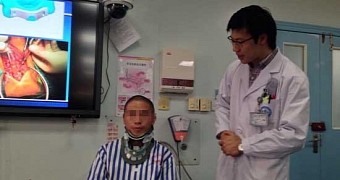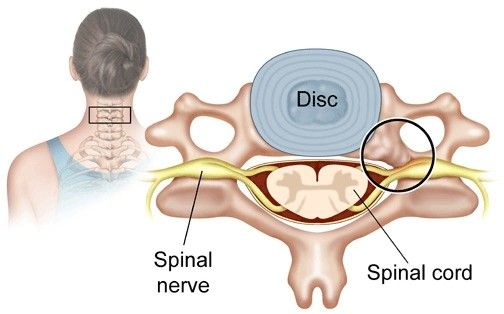Getting your spine severed is the surest way to remain paralyzed for life, but there are many other things that can cause the same thing, both locally and for a whole half or more of your body. A 40 year-old Chinese man by the name of Yang Xue-bin knows this well.
He also happens to be one of the lucky ones whose condition was reversible. However, the surgery he had to go through was very risky and difficult, and could have led to lots of complications if 3D printing hadn't been used.
3D printing tech is really changing how surgeons do their stuff, both by providing means to replace bones and such, and by making it easier to conduct operations.
In the case of Yang Xue-bin's surgery, it was the latter case. The doctors used 3D printed models to plan and practice before the real thing.
The reason Yang Xue-bin was immobilized
He suffered from a condition called cervical spinal stenosis, where the spinal canal abnormally narrows until it restricts the marrow canal enough to cause numbness, pain and loss of motor control.
Yang Xue-bin first found out he suffered from this condition when the worst of the symptoms hit him quickly some time before he was finally diagnosed on September 23.
At first he could still walk, but soon he was confined to a wheelchair. So we suppose it's not really outright paralysis, but the result was the same. Some might say worse, given the pain.
Obviously, being confined to a wheelchair in a matter of days was something out of a nightmare. Fortunately, a team of surgeons was able to operate on him and restore the blood flow through his spinal canal.
How the operation went down
The surgery meant to counter cervical spinal stenosis involves various drilling and grinding tools to cut two slots through the lamina area of the vertebra.
Since that's a very dangerous area to work with sharp objects on (just a small graze on the marrow can be devastating), anything that can reduce the odds of errors was researched.
One thing led to another and the surgeon team took the CT scans and built 3D printed surgical guides to help them plan the procedure and practice. A 3D printed guide plate was even placed in the surgical area during the operation and was used to place slots in the lamina, using holes already on the 3D printed plate.
On a related note, this approach can reduce the experience needed by orthopedic surgeons from ten years to three or five.

 14 DAY TRIAL //
14 DAY TRIAL // 

